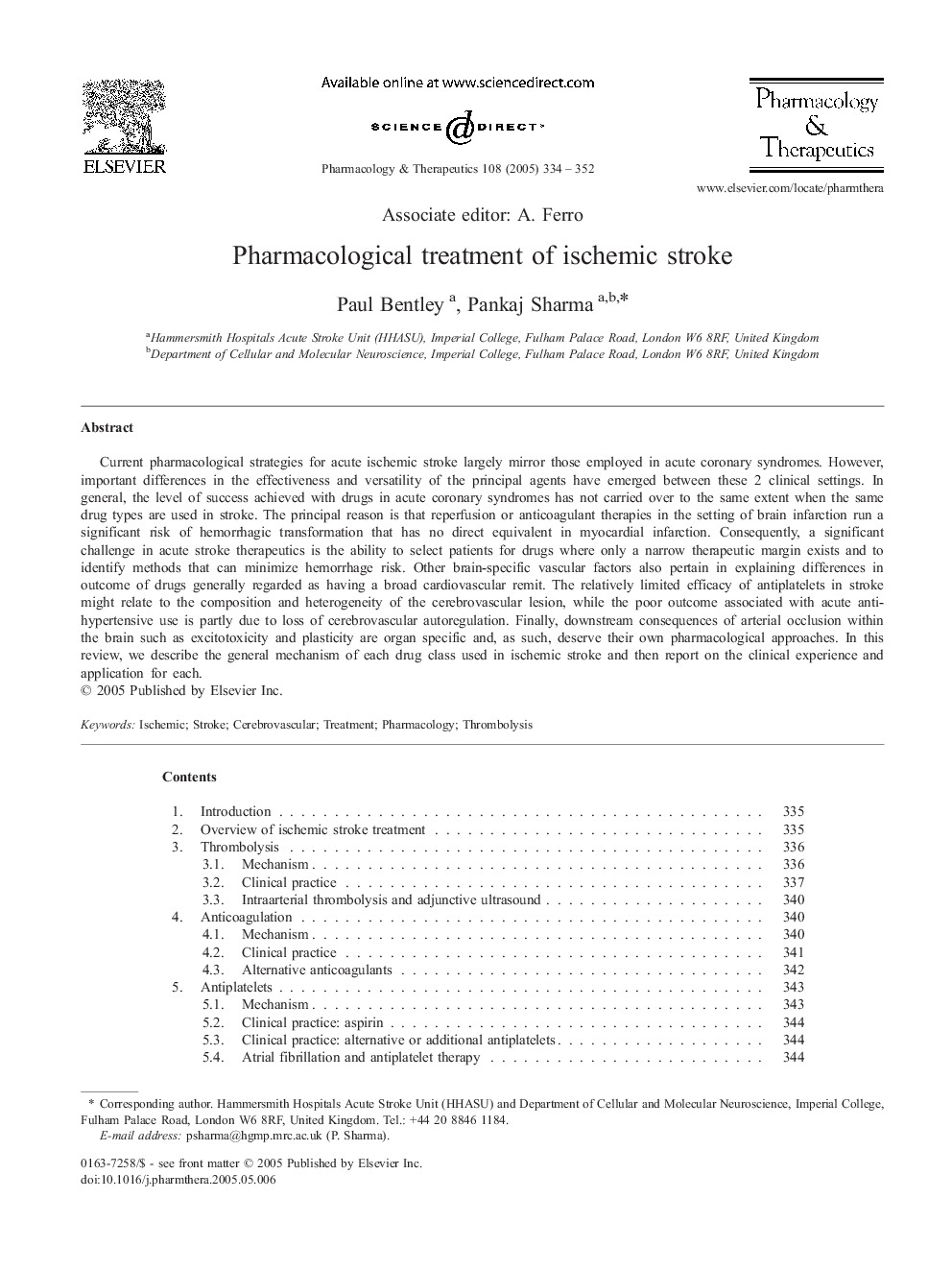| Article ID | Journal | Published Year | Pages | File Type |
|---|---|---|---|---|
| 9015860 | Pharmacology & Therapeutics | 2005 | 19 Pages |
Abstract
Current pharmacological strategies for acute ischemic stroke largely mirror those employed in acute coronary syndromes. However, important differences in the effectiveness and versatility of the principal agents have emerged between these 2 clinical settings. In general, the level of success achieved with drugs in acute coronary syndromes has not carried over to the same extent when the same drug types are used in stroke. The principal reason is that reperfusion or anticoagulant therapies in the setting of brain infarction run a significant risk of hemorrhagic transformation that has no direct equivalent in myocardial infarction. Consequently, a significant challenge in acute stroke therapeutics is the ability to select patients for drugs where only a narrow therapeutic margin exists and to identify methods that can minimize hemorrhage risk. Other brain-specific vascular factors also pertain in explaining differences in outcome of drugs generally regarded as having a broad cardiovascular remit. The relatively limited efficacy of antiplatelets in stroke might relate to the composition and heterogeneity of the cerebrovascular lesion, while the poor outcome associated with acute anti-hypertensive use is partly due to loss of cerebrovascular autoregulation. Finally, downstream consequences of arterial occlusion within the brain such as excitotoxicity and plasticity are organ specific and, as such, deserve their own pharmacological approaches. In this review, we describe the general mechanism of each drug class used in ischemic stroke and then report on the clinical experience and application for each.
Related Topics
Health Sciences
Pharmacology, Toxicology and Pharmaceutical Science
Pharmacology
Authors
Paul Bentley, Pankaj Sharma,
